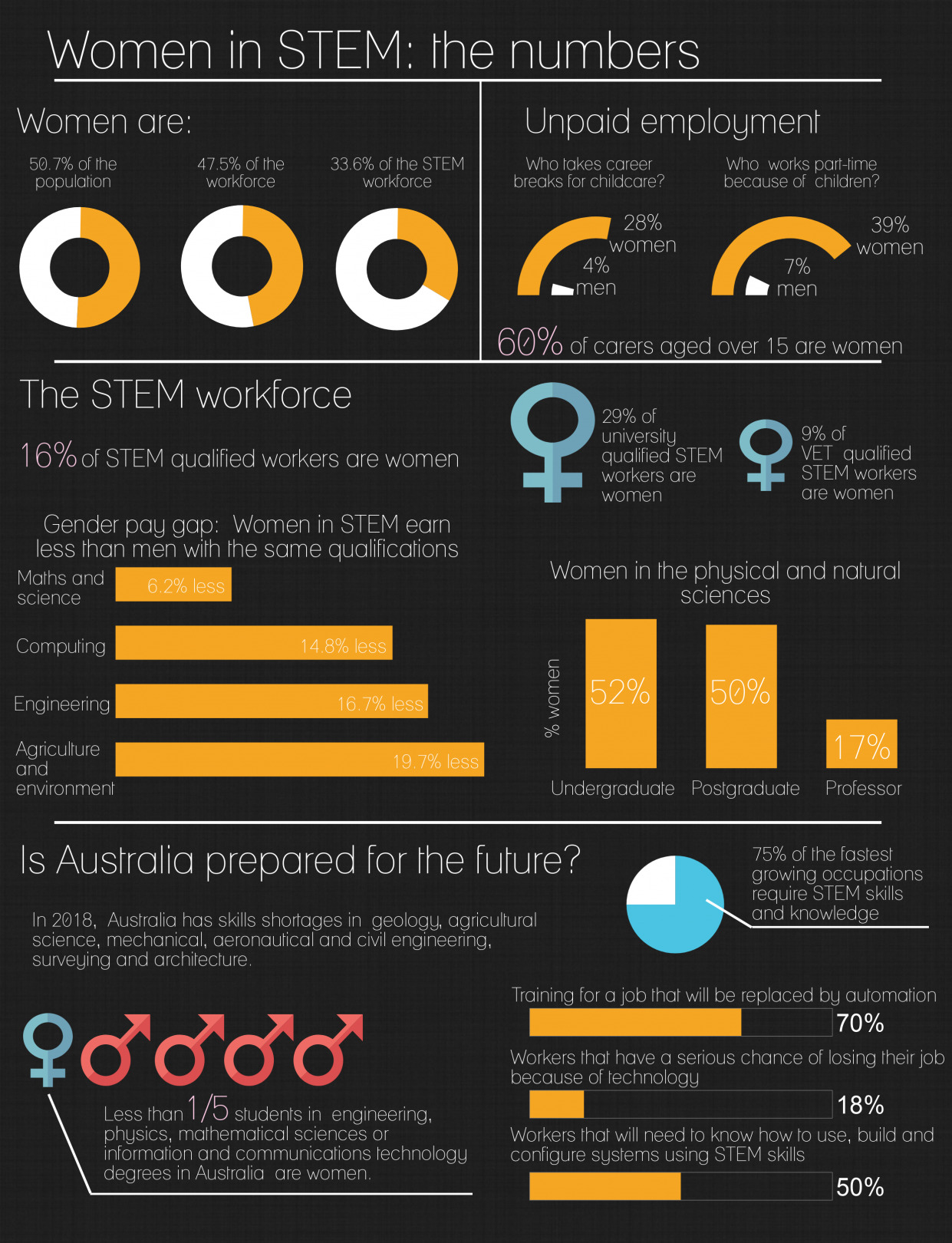
Ensure every student is exposed to engineering and computer science, and Next Generation Science Standards in K–12. Reduce tracking and high-stakes assessment in early grades that reinforce biases and stereotypes. Encourage girls and women to take math and science classes - including advanced classes. 
#Women and stem careers professional#
Provide professional development to teachers - addressing implicit and systemic biases to raise awareness about girls’ math abilities, avoid passing on math anxiety and ensure boys and girls are held to the same standards. And Latina and Black women in STEM earn around $33,000 less (at an average of around $52,000 a year). Men in STEM annual salaries are nearly $15,000 higher per year than women ($85,000 compared to $60,828). 38% of women who major in computers work in computer fields, and only 24% of those who majored in engineering work in the engineering field. And, women are more highly represented in lower-paying fields, such as home health workers, nurses and the lower-paying specialties such as pediatricians. Nearly 80% of the health care workforce are women, but only about 21% of health executives and board members are women, and only about a third of doctors. Women are Underrepresented in STEM Workforceīy the time students reach college, women are significantly underrepresented in STEM majors - for instance, only around 21% of engineering majors are women and only around 19% of computer and information science majors are women. Girls score higher than boys in math in lower-income, predominantly Black areas (representing around one-quarter of school districts), but their scores are still disproportionately low compared to scores for white boys in high-income areas. Boys, on the other hand, are more likely to say they are strong in math by 2nd grade, before any performance differences are evident.Ī gendered math gap exists in elementary school - but it is really only evident among boys from higher-income and predominantly white areas performing significantly higher in math, even compared to girls attending those same schools. Many girls lose confidence in math by third grade. The myth of the math brain is one of the most self-destructive ideas in American education – research shows no innate cognitive biological differences between men and women in math. Math Anxiety: Teachers, who are predominantly women, often have math anxiety they pass onto girls, and they often grade girls harder for the same work, and assume girls need to work harder to achieve the same level as boys. There are even fewer Black women role models in math and science.  Fewer Role Models: girls have fewer role models to inspire their interest in these fields, seeing limited examples of female scientists and engineers in books, media and popular culture. Male-Dominated Cultures: Because fewer women study and work in STEM, these fields tend to perpetuate inflexible, exclusionary, male-dominated cultures that are not supportive of or attractive to women and minorities. Gender Stereotypes: STEM fields are often viewed as masculine, and teachers and parents often underestimate girls’ math abilities starting as early as preschool. Key factors perpetuating gender STEM gaps:
Fewer Role Models: girls have fewer role models to inspire their interest in these fields, seeing limited examples of female scientists and engineers in books, media and popular culture. Male-Dominated Cultures: Because fewer women study and work in STEM, these fields tend to perpetuate inflexible, exclusionary, male-dominated cultures that are not supportive of or attractive to women and minorities. Gender Stereotypes: STEM fields are often viewed as masculine, and teachers and parents often underestimate girls’ math abilities starting as early as preschool. Key factors perpetuating gender STEM gaps: 
And some of the highest-earning STEM occupations, such as computer science and engineering, have the lowest percentages of women workers.

Giving women equal opportunities to pursue - and thrive in - STEM careers helps narrow the gender pay gap, enhances women’s economic security, ensures a diverse and talented STEM workforce and prevents biases in these fields and the products and services they produce.Ī typical STEM worker earns two-thirds more than those employed in other fields, according to Pew Research Center. Tracking Girls and Women Out of Higher-Paying STEM Areas








 0 kommentar(er)
0 kommentar(er)
